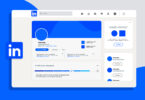Introduction
As a former teacher, I understand the importance of using technology in the classroom. One of the most significant technological advancements that have transformed the way students learn is the smartboard. Smartboards are interactive whiteboards that allow teachers to display and manipulate digital content on a large screen. In this article, I will explain why smartboards are essential for modern teaching.
Benefits of using smartboards in the classroom
Smartboards offer numerous benefits in the classroom. Firstly, they help to engage students in the learning process by making lessons more interactive and visually appealing. With smartboards, teachers can easily display videos, images, and other multimedia content, which enhances the overall learning experience. Students are more likely to retain information presented in a fun and interactive way, rather than through traditional lectures. Secondly, smartboards enable teachers to create a collaborative learning environment. Students can interact with the board by drawing, writing, and manipulating digital content.
This feature encourages student participation and helps to develop critical thinking and problem-solving skills. Additionally, smartboards allow students to work together on projects, which fosters teamwork and communication skills. Finally, smartboards offer a more efficient way of presenting information in the classroom. Teachers can easily switch between different modes, such as writing, drawing, and displaying multimedia content. This feature enables teachers to present information in a way that suits different learning styles and keeps students engaged throughout the lesson.
Interactive learning with smartboards
One of the most significant advantages of using smartboards in the classroom is the ability to create interactive lessons. Smartboards allow teachers to add interactive elements to their lessons, such as quizzes, games, and polls. These features help to keep students engaged and motivated to learn. Interactive lessons can also be tailored to suit the needs of individual students. For example, teachers can create different levels of quizzes to challenge students at their own pace. This feature ensures that all students are learning at their own level and are not left behind. Smartboards also offer a range of interactive tools, such as pens and erasers, which allow students to interact with the board directly. This feature encourages students to participate in the lesson and helps to develop their fine motor skills.
Smartboard features and capabilities
Smartboards offer a range of features and capabilities that make them an essential tool for modern teaching. Firstly, they offer a large display screen that allows teachers to display digital content in a clear and visible way. This feature is particularly useful for larger classrooms where students may struggle to see the board from their seats. Secondly, smartboards offer a range of tools and features that allow teachers to create interactive lessons quickly and easily. These tools include pens, erasers, and the ability to add multimedia content such as videos and images. Another useful feature of smartboards is the ability to save lessons for future use.
Teachers can save their lessons to a USB drive or cloud-based storage and access them at any time. This feature is particularly useful for teachers who teach the same lesson across multiple classes. # Examples of smartboard lesson plans There are numerous ways that teachers can use smartboards to create engaging and interactive lesson plans. Here are a few examples: – Create a Jeopardy-style quiz game to review content from previous lessons – Use a virtual timeline to teach history or science concepts – Create a digital storyboard to plan creative writing assignments – Use a virtual map to teach geography or social studies concepts – Use a virtual laboratory to teach science concepts
Read More: The Future of Laundry Exploring the Latest Dryer Technologies
Smartboard best practices for teachers
To make the most of smartboards in the classroom, teachers should follow a few best practices. Firstly, teachers should ensure that they have a clear plan for each lesson and that they are familiar with the capabilities of the smartboard. This will help to ensure that the lesson is engaging and interactive. Secondly, teachers should encourage student participation by allowing them to interact with the smartboard directly. This feature helps to keep students engaged and motivated to learn. Finally, teachers should ensure that they are using appropriate digital content and multimedia in their lessons. The content should be relevant and appropriate for the grade level and should support the learning objectives of the lesson.
Integration of smartboards
With other classroom technology Smartboards can be integrated with other classroom technology to create a more efficient and engaging learning environment. For example, teachers can use tablets or laptops to control the smartboard and display content wirelessly. This feature allows teachers to move around the classroom and interact with students while still controlling the smartboard. Smartboards can also be integrated with other classroom technology, such as projectors and sound systems. This feature ensures that all students can see and hear the lesson clearly and effectively.
Smartboard maintenance and troubleshooting
To ensure that smartboards are functioning correctly, teachers should follow a few maintenance and troubleshooting tips. Firstly, teachers should ensure that the smartboard is clean and free of debris. This will help to ensure that the board is functioning correctly and that the digital content is clear and visible. Secondly, teachers should ensure that the smartboard is calibrated correctly. Calibration ensures that the board is accurately tracking touch and pen input and that the digital content is displayed correctly. Finally, teachers should be familiar with common troubleshooting tips, such as restarting the board or checking for software updates. These tips can help to resolve common issues quickly and easily.
Cost considerations for smartboards
While smartboards offer numerous benefits in the classroom, they can be expensive to purchase and maintain. Teachers should consider the overall cost of the smartboard, including installation, maintenance, and software updates. Teachers should also consider alternative options, such as using tablets or laptops to display content wirelessly. These options can be more cost-effective and still offer many of the benefits of a smartboard.
Conclusion:
the future of smartboards in education Smartboards have transformed the way students learn in the classroom. They offer numerous benefits, including interactive learning, collaboration, and efficiency. As technology continues to evolve, smartboards will become even more advanced and will offer new and exciting features for teachers and students. In conclusion, smartboards are essential for modern teaching. They offer numerous benefits and can help to create a more engaging and interactive learning environment. Teachers should be familiar with the capabilities of smartboards and should consider integrating them with other classroom technology to create a more efficient and effective learning environment.







[…] Read More: Why Smartboards are Essential for Modern Teaching? […]
Best cucmber ever cucumber